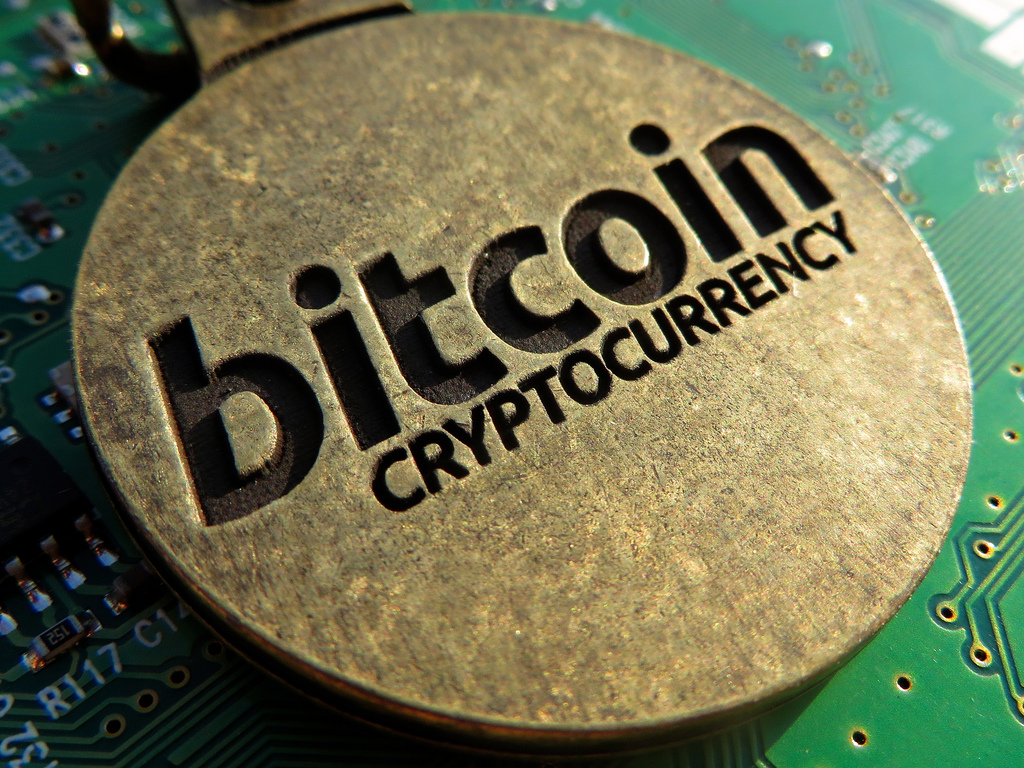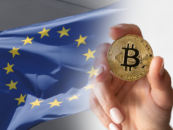People often ask me to explain to them why would anyone, with easy access to a bank account and not engaged in illegal activities, choose to use Bitcoin for domestic payments, after all, current payment systems are far more ubiquitous, scalable and performant than Bitcoin.
Author: Alex Batlin
“Bitcoin is an innovative payment network and a new kind of money.”
All true. Let’s see what Bitcoin.org has to say: “Bitcoin is an innovative payment network and a new kind of money. Bitcoin uses peer-to-peer technology to operate with no central authority or banks; managing transactions and the issuing of bitcoins is carried out collectively by the network. Bitcoin is open-source; its design is public, nobody owns or controls Bitcoin and everyone can take part. Through many of its unique properties, Bitcoin allows exciting uses that could not be covered by any previous payment system.”
“… allows exciting uses that could not be covered by any previous payment system”
Lets first of all explore the last statement “allows exciting uses that could not be covered by any previous payment system”. What are these uses cases? This is where smart contracts really come into play, defined by Wikipedia as such: “Smart contracts are computer protocols that facilitate, verify, or enforce the negotiation or performance of a contract, or that make a contractual clause unnecessary. Smart contracts usually also have a user interface and often emulate the logic of contractual clauses. Proponents of smart contracts claim that many kinds of contractual clauses may thus be made partially or fully self-executing, self-enforcing, or both. Smart contracts aim to provide security superior to traditional contract law and to reduce other transaction costs associated with contracting.”
Smart contracts, when executed on blockchain platforms like Ethereum, are especially powerful since they both can hold value under their own account and only release it to a person if the code permits, and are autonomous from their creator as it requires majority consensus to validate contract performance, meaning that these smart contracts can act as trusted escrow agents for say house purchase deposits, negating the need for an expensive lawyer.
Ok, that’s very useful, especially once the scaling and performance issues are solved, but let’s also examine the second statement: “Bitcoin uses peer-to-peer technology to operate with no central authority or banks; managing transactions and the issuing of bitcoins is carried out collectively by the network.”
“Bitcoin uses peer-to-peer technology to operate with no central authority or banks; managing transactions and the issuing of bitcoins is carried out collectively by the network.”
The bit about issuing bitcoins without central authority or banks, is in some ways, the much bigger deal. Let’s examine Bitcoin’s history. It’s 2008, and the global financial crisis is raging. Northern Rock is the first bank in Europe to be taken into state control in February of that year. September sees Lehman Brothers filing for Chapter 11 bankruptcy protection. In October, President George W. Bush signs the revised Emergency Economic Stabilization Act into law, creating a 700 billion dollar Treasury fund to purchase failing bank assets, kick starting in effect the quantitative easing monetary policy.
Dark times indeed, so it is of little surprise that few take notice of a whitepaper published on Internet titled ‘Bitcoin: A Peer-to-Peer Electronic Cash System‘, proposing “A purely peer-to-peer version of electronic cash would allow online payments to be sent directly from one party to another without going through a financial institution.” However the few that do notice, create a network in 2009 that is worth about 6.4B USD by 2016.
The original whitepaper provides the following raison d’etre for Bitcoin: “Commerce on the Internet has come to rely almost exclusively on financial institutions serving as trusted third parties to process electronic payments. While the system works well enough for most transactions, it still suffers from the inherent weaknesses of the trust based model. Completely non-reversible transactions are not really possible, since financial institutions cannot avoid mediating disputes. The cost of mediation increases transaction costs, limiting the minimum practical transaction size and cutting off the possibility for small casual transactions, and there is a broader cost in the loss of ability to make non-reversible payments for non- reversible services. With the possibility of reversal, the need for trust spreads. Merchants must be wary of their customers, hassling them for more information than they would otherwise need. A certain percentage of fraud is accepted as unavoidable.”
Whilst the whitepaper focuses on disintermediation of financial institutions for payments, it also proposes a new money creation process that is not depended on a central authority: “The problem of course is the payee can’t verify that one of the owners did not double-spend the coin. A common solution is to introduce a trusted central authority, or mint, that checks every transaction for double spending. After each transaction, the coin must be returned to the mint to issue a new coin, and only coins issued directly from the mint are trusted not to be double-spent. The problem with this solution is that the fate of the entire money system depends on the company running the mint, with every transaction having to go through them, just like a bank … By convention, the first transaction in a block is a special transaction that starts a new coin owned by the creator of the block. This adds an incentive for nodes to support the network, and provides a way to initially distribute coins into circulation, since there is no central authority to issue them. The steady addition of a constant of amount of new coins is analogous to gold miners expending resources to add gold to circulation. In our case, it is CPU time and electricity that is expended.”
The net effect of the proposed system is disintermediation of the trust based money model run by commercial financial institutions and government controlled central banks. High costs and information over-collection issues are directly cited, but an embedded message in the first Bitcoin transaction: “2009 Jan – The Times 03/Jan/2009 Chancellor on brink of second bailout for banks” may suggest a general distrust of the established order, not surprising frankly, given the wider context.
It is important to keep these principles in mind when comparing Bitcoin, and inspired by it other crypto currencies, against existing trust based centralized payment systems. Once again, the incumbents are superior in almost every way e.g. they can process many more transactions much faster, the do not incur proof of work electricity costs, they have established legal recourse etc. but they all rely on trust, and the global financial crises showed us what happens when those who we trust get it wrong – it is estimated that the 2008 financial crises cost US alone $22 trillion; so for some people this one fact is enough to put up with all of the current deficiencies of P2P money.
Use of Bitcoin is therefore an opt-out and a vote of no confidence of the current system. It may seem crazy to question the current fiat money system, until you realize that some very respected insiders are doing just that already! For instance, Mervyn King, the ex-governor of the Bank of England, said this back in 2010: “Eliminating fractional reserve banking explicitly recognizes that the pretence that risk-free deposits can be supported by risky assets is alchemy. If there is a need for genuinely safe deposits the only way they can be provided, while ensuring costs and benefits are fully aligned, is to insist such deposits do not co-exist with risky assets.” – in essence questioning how money is created under the current system.
Crypto Currencies vs. the current monetary system
 In 2012, Jaromir Benes and Michael Kumhof published an IMF working paper called The Chicago Plan Revisited, validating in their opinion the advantages of sovereign money system, an alternative approach where money is created by state alone and not commercial banks. Monetary Reform – A Better Monetary System for Iceland, a report by Frosti Sigurjonsson, commissioned by the prime minister of Iceland, reaches roughly the same conclusions. This very question is now going to be the subject of a national referendum in Switzerland, which will consider ending fractional reserve banking.
In 2012, Jaromir Benes and Michael Kumhof published an IMF working paper called The Chicago Plan Revisited, validating in their opinion the advantages of sovereign money system, an alternative approach where money is created by state alone and not commercial banks. Monetary Reform – A Better Monetary System for Iceland, a report by Frosti Sigurjonsson, commissioned by the prime minister of Iceland, reaches roughly the same conclusions. This very question is now going to be the subject of a national referendum in Switzerland, which will consider ending fractional reserve banking.
It is important to note that Bitcoin’s finite money supply algorithm is not the only possible solution. In my Bitcoin Supremacy blog I explore the issues with a deflationary currency, yet other virtual currencies like Ethereum’s Ether use a different algorithm: “Ether (ETH), the crypto fuel that powers distributed applications on the Ethereum platform, will be issued at a constant annual linear rate via the block mining process. Though the issuance of ETH is in a fixed amount each year, the rate of growth of the monetary base (monetary inflation) is not constant. This monetary inflation rate decreases every year making ETH a disinflationary currency (in terms of monetary base). Disinflation is a special case of inflation in which the amount of inflation shrinks over time.”
This is a variation on Friedman’s k-percent rule: “Friedman’s k-percent rule is the monetarist proposal that the money supply should be increased by the central bank by a constant percentage rate every year, irrespective of business cycles.Milton Friedman coauthored a book with Anna Schwartz to summarize a historical analysis of monetary policy, called ‘Monetary History of the United States 1867-1960’. The book attributed inflation to excess money supply generated by a central bank. It attributed deflationary spirals to the reverse effect of a failure of a central bank to support the money supply during a liquidity crunch. Friedman proposed a fixed monetary rule, called Friedman’s k-percent rule, where the money supply would be calculated by known macroeconomic and financial factors, targeting a specific level or range of inflation. Under this rule, there would be no leeway for the central reserve bank as money supply increases could be determined ‘by a computer’ and business could anticipate all monetary policy decisions.”
The Chicago Plan Revisited paper makes this observation: “The main reason why monetarism (a school of thought shared by Freidman that emphasizes the role of governments in controlling the amount of money in circulation) had to be abandoned in the 1980s is the fact that under the present monetary system the government can only pursue a rule such as (30) for the narrow monetary aggregates under its direct control. This is only effective if there is a stable deposit multiplier that relates broad to narrow monetary aggregates. However, as discussed in section I, the deposit multiplier is a myth. Under the current monetary system, broad monetary aggregates are created by banks as a function, almost exclusively, of their attitude towards credit risk, without narrow aggregates imposing any effective constraint. On the other hand, under the Chicago Plan the rule (30) directly controls the broadest monetary aggregate. In other words, monetarism becomes highly effective at achieving its main objective. This is the main reason why Friedman (1967) was in favour of the 100% reserve solution. “
The Icelandic paper proposes the following sovereign money creation algorithm that accounts for economic growth: “The Money Creation Committee (MCC) will aim to increase the money stock in line with economic growth but without exceeding the inflation target (e.g. 2.5% per annum). Assuming an initial money stock of ISK 486 bn, GDP growth of 2% and inflation of 2%, then the required annual increase in money supply will be close to ISK 20 billion. Although this is a considerable amount it is less than 4% of the total budget. The MCC does not have to make perfect decisions on money creation to deliver a dramatic improvement on the present system where commercial banks have expanded the money supply at unsustainable rates. In contrast, the MCC will have no goals other than to create enough money to support economic growth and to promote price stability.”
This is why blockchain technology is so exciting – it is not just about an incremental improvement in utility e.g. escrow smart contracts, it is not just about dramatically lowering the cost of setting up a trusted business, see the Great Unbundle blog, it is also about the ability to quickly and cheaply experiment with new money creation models.
One issue with Bitcoin, being a hardwired protocol, is that you can’t easily introduce many competing currency models on the same platform, and we know how hard it is to create a new network for each new protocol and a system to easily exchange value between networks, hence why softwired platforms like Ethereum are enticing – sure Ether’s issuance algorithm is fixed, but it is trivial to create almost an unlimited number of alternative easily exchangable currency models on the same platform without incurring the cost of creating a brand new network every time. Exciting times!
(This blog post has been first published on Linkedin Pulse and was republished with the allowance of Alex Batlin)
————————————————-
See more: Alex Batlin’s Briefing of Crypto 2.0 Musings Regulation








19 Comments so far
Jump into a conversationThe International Monetary Fund (IMF) is concerned that digital currencies like Bitcoin can pose a lot of risks. The International Financial Stability Board (FSB) believes that the current digital currencies have not yet replaced traditional currencies, due to their limited use for economic and financial transactions.
However, if this currency is widely used in transactions or is more closely linked to the financial system, then regulators need to consider international coordination in the management of this currency.
Knyl Erkek Cüzdantr En Çok Talep Edilenler: Erkek Cüzdan, Kartlık ve Para. ERKEK CÜZDAN&KARTLIK %100 HAKİKİ DERİDEN YAPILMIŞTIR. Knyl Modelleri, Fiyatları ve Ürünleri. KNYL Özel Kutusunda Hakiki Deri Slim Kartlık Cüzdan DE6609 69,90 TL Ürün Özelliği Seç; Garbalia Erkek Deri Cüzdan Çift Renk Hakiki Deri Kartlık Portföy Yatay Tasarım 111,25 TL Ürün Özelliği Se ç; Garbalia Unisex Erkek Deri Kartlık Pratik Cüzdan Siyah 139,10. KNYL Özel Kutusunda Hakiki Deri Lastikli Kartlık Cüzdan DE6601. ZARA ERKEK koleksiyonundaki sezonun en trend ürünlerini keşfedin. Kaliteli ve şık Erkek Çanta & Cüzdan modelleri, ücretsiz kargo ve indirimli fiyat avantajı için hemen inceleyin. Metal aksesuarlarla veya baskı ile süslenmiş çeşitleri vardır (Resim 1. com ‘ da kol düğmesi, aksesuar, takı, kravat. Deri Cüzdan Modelleri Tasarım Bileklik Çeşitlerini 2TL’den Başlayan Fiyatlarla Tükenmeden Alın!. 657787655 en uygun fiyatı GittiGidiyor’da! Hakiki Deri Erkek Kot Kemeri Spor Genç Tarz Trend Model Cod. Erkek cüzdanları genellikle saat, kemer ve ayakkabı gibi ürünlerle kombin haline getirilerek kullanılmaktadır. com bir tık kadar yakınınızda olup kol.
Great post!!
Gold Bits Coin (GBC) traded up 48.20% against the US dollar and market cap for GBC is $32,195,412. Gold Bits Coin traded $17,887 worth of on exchanges.
GBC can be purchased or sold on the following cryptocurrency exchanges: DDEX and IDAX.
The International Monetary Fund (IMF) is wary of the potential dangers posed by Bitcoin and similar digital currencies. In the opinion of the International Financial Stability Board (FSB), digital currencies have not yet fully supplanted conventional currencies because of their limited usage in economic and financial activities.
Bitcoin and money creation is a complex subject that I am not sure if I am qualified to discuss in depth. However, I can give you a brief overview of the basics. Bitcoin is a digital asset that uses cryptography to secure its transactions and to control the creation of new units of currency. Money creation happens when people or businesses create new units of currency by issuing new Bitcoin units.
Great post , but the topic is quite complex.
According to Visa, two key components are required for CBDCs to succeed: a positive customer experience and broad merchant acceptance.
The benefits of a new currency is not new, we will always see new options that will allow us to always be attentive to what comes out as an alternative to the currency.
The article is really good. I found here looking for a good article because my heart was empty. There are a lot of different articles, so reading them makes me feel a bit empty. Next time I want to read an article about, please. 토토사이트
Is blockchain, thus bitcoin, still safe in 2023? And how about NFT?
Bitcoin operates on a decentralized network, meaning no single entity has control over it. Some individuals prefer this decentralized nature as it grants them more control over their own funds without relying on banks or payment processors.
This is a well-known business simulation game made by Flipline Studios. In this game, players take on the role of a pizza shop owner and are in charge of greeting customers, making pizzas, running the business, and other duties.
This post explains the innovative features of Bitcoin and how it allows for exciting uses that were not possible with previous payment systems. Overall, this post provides a good introduction to the potential benefits of Bitcoin and its underlying technology for those who are new to the topic.
This is a well-known Flipline Studios business simulation game. In this game, players own a pizzeria and must meet patrons, prepare pizza, manage the operation, and perform other tasks. tunnel rush
The novel aspects of Bitcoin are discussed in this article, along with how it enables intriguing applications that were not feasible with earlier payment methods.
The enneagram test provides an overview of the fundamental factors shaping each individual’s behavior and perspectives. By understanding your Enneagram type, you can recognize patterns in how you approach life and interact with others